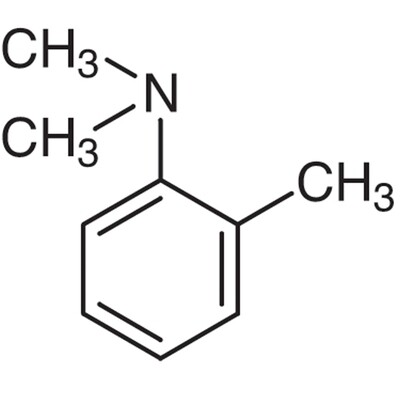Tetrakis (dimethylamido) titanium 99.99% 10 g
SKU 901077
€ 244,35
In stock
1
Save this product for later
Tetrakis (dimethylamido) titanium 99.99% 10 g
Product Details
CAS number: 3275-24-9
Chemical formulas: Ti[N(CH3)2]4/ F.W. 224.21/ b.p. 50/ 0.5 mm/ Vacuum distilled
Cation: Tl
Packaging: 10 g
EAN: 8721028256683
Brand: Laboratoriumdiscounter
Tetrakis (dimethylamido) titanium is a highly versatile compound used in various industries, including semiconductor manufacturing and organic synthesis. With its unique properties, this titanium compound plays a crucial role in catalysis and deposition processes. Discover how Tetrakis (dimethylamido) titanium enhances performance and efficiency in cutting-edge technologies.
When working with Tetrakis (dimethylamido) titanium, it is important to follow proper safety precautions to minimize the risk of accidents or exposure to harmful substances. Here are some short safety instructions to consider: 1. Personal Protective Equipment (PPE): Always wear appropriate PPE, including gloves, safety goggles, and a lab coat or protective clothing. This will help protect your skin, eyes, and clothing from potential contact with the chemical. 2. Ventilation: Ensure that you are working in a well-ventilated area or under a fume hood. Tetrakis (dimethylamido) titanium can release harmful vapors, so proper ventilation is crucial to prevent inhalation. 3. Handling and Storage: Handle the chemical with care, avoiding any spills or splashes. Store it in a cool, dry place away from incompatible substances. Follow the manufacturer's instructions for proper storage and disposal. 4. Fire Safety: Tetrakis (dimethylamido) titanium is flammable, so keep it away from open flames, sparks, or heat sources. Have appropriate fire extinguishing equipment nearby and know how to use it. 5. Emergency Procedures: Familiarize yourself with the emergency procedures in case of accidental exposure or spills. Know the location of safety showers, eyewash stations, and fire exits. 6. Training and Knowledge: Ensure that you have received proper training on handling Tetrakis (dimethylamido) titanium. Understand its properties, hazards, and safe handling procedures before working with it. 7. First Aid: In case of accidental exposure, seek medical attention immediately. Rinse affected areas with plenty of water and remove contaminated clothing. Do not induce vomiting if ingested. Remember, these are just general safety instructions, and it is essential to consult the specific safety data sheet (SDS) and follow the guidelines provided by the manufacturer for the specific chemical you are working with.
Please note, not all safety data for this product is available on our website, for a complete list of P en H sentences and other safety instructions please request the MSDS at our customer service
You May Also Like

N-CYCLOPENTYL-4-FLUOROBENZAMIDE, 95%, 100mg
N-CYCLOPENTYL-4-FLUOROBENZAMIDE, 95%, 100mg
SKU F799115-100MG
€ 169,40

2-(3-fluorophenyl)-1H-imidazole, 95.0%, 500mg
2-(3-fluorophenyl)-1H-imidazole, 95.0%, 500mg
SKU F515395-500MG
€ 1 185,80
End user declaration required

N,N-Dimethyl-o-toluidine>99.0%(GC)25mL
N,N-Dimethyl-o-toluidine>99.0%(GC)25mL
Only for registered companies
SKU D0805-25ML
€ 30,80

5-Bromo-4-cyanopyrimidine, 95.0%, 250mg
5-Bromo-4-cyanopyrimidine, 95.0%, 250mg
SKU F227733-250MG
€ 56,10

1-Phenyl-1-cyclopropyl ethanol, 97.0%, 500mg
1-Phenyl-1-cyclopropyl ethanol, 97.0%, 500mg
SKU F399646-500MG
€ 240,90
![2-Methylbenzo[d]thiazol-4-amine, 98%, 250mg 2-Methylbenzo[d]thiazol-4-amine, 98%, 250mg](https://d2j6dbq0eux0bg.cloudfront.net/images/88473019/4860020134.png)
2-Methylbenzo[d]thiazol-4-amine, 98%, 250mg
2-Methylbenzo[d]thiazol-4-amine, 98%, 250mg
SKU F697472-250MG
€ 724,90

1-(Benzyloxy)-4-(bromomethyl)benzene, 95.0%, 250mg
1-(Benzyloxy)-4-(bromomethyl)benzene, 95.0%, 250mg
SKU F446461-250MG
€ 184,80
Display prices in:EUR

![5-Bromo-1H-pyrrolo[2,3-b]pyridin-4-amine, 95.0%, 250mg 5-Bromo-1H-pyrrolo[2,3-b]pyridin-4-amine, 95.0%, 250mg](https://d2j6dbq0eux0bg.cloudfront.net/images/88473019/4863932764.png)




